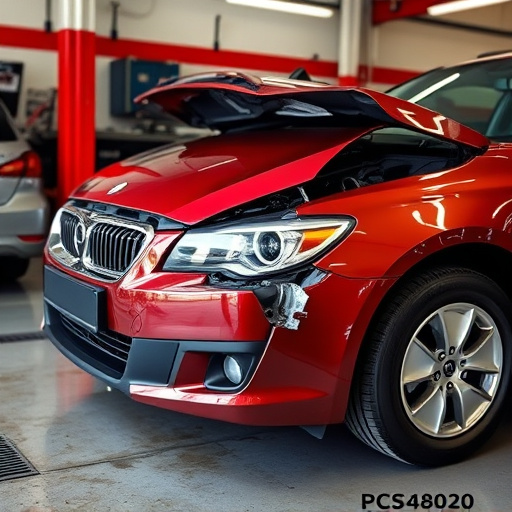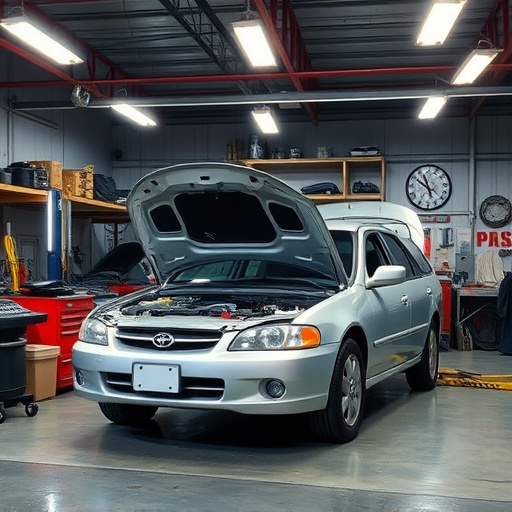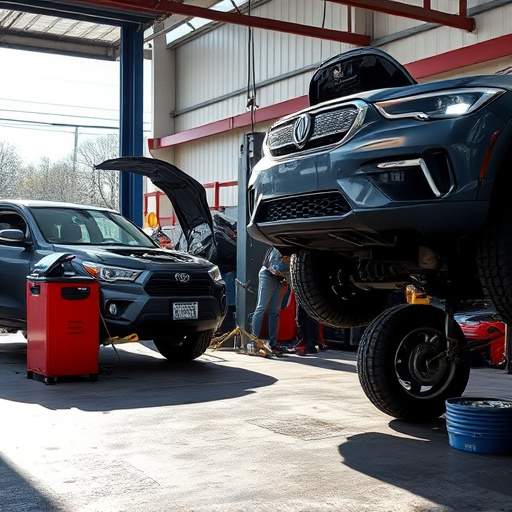Tesla's advanced Safety System Alerts rely on sensors and cameras to detect hazards. Regular Tesla repair scanning is crucial for addressing these alerts, as damage or sensor issues can trigger them. Skilled technicians use specialized tools to diagnose and fix safety system problems, ensuring optimal performance and enhanced vehicle safety. Resetting alerts involves connecting a laptop, accessing error codes, and clearing memory modules for efficient resolution.
“Unravel the mysteries of Tesla’s safety system alerts and master the art of efficient troubleshooting with our comprehensive guide. In today’s electric vehicle landscape, understanding Tesla repair scanning is crucial for ensuring optimal car performance. Learn how scanning tools diagnose issues within the complex network of your Tesla’s safety systems. This article provides a step-by-step guide to resetting alerts, empowering you to navigate and resolve potential problems swiftly.”
- Understanding Tesla Safety System Alerts
- The Role of Scanning in Diagnosing Issues
- Resetting Alerts: A Step-by-Step Guide
Understanding Tesla Safety System Alerts

Tesla Safety System Alerts are designed to ensure the highest level of driver and passenger protection. These alerts are generated by a sophisticated network of sensors and cameras that constantly monitor the vehicle’s surroundings. When detecting potential hazards, such as forward collisions, lane deviations, or emergency braking events, the system activates visual and audible warnings on the car’s display. Understanding these alerts is crucial for Tesla owners, as it allows them to address issues promptly.
Regular Tesla repair scanning can help identify and reset these safety system alerts, ensuring that your vehicle’s protective mechanisms operate optimally. For instance, a minor collision or a car dent removal service might trigger an alert due to sensor damage or misalignment. A thorough scan by a qualified technician can detect such issues, clear the alerts, and restore peace of mind while driving. This proactive approach to maintenance not only enhances safety but also prevents unnecessary concerns related to vehicle performance.
The Role of Scanning in Diagnosing Issues

Tesla repair scanning plays a pivotal role in diagnosing and addressing safety system alerts within Tesla vehicles. This advanced process involves utilizing specialized tools to scan the vehicle’s computer systems, allowing technicians to detect any anomalies or errors in the complex network that governs various safety features. By accessing this data, skilled mechanics can accurately identify issues with sensors, cameras, and other critical components, ensuring optimal performance of the car’s safety systems.
Through systematic scanning, collision center experts can differentiate between genuine system failures and false alerts, which is crucial for avoiding unnecessary body shop services. This meticulous approach enables efficient car damage repair processes, focusing resources on legitimate concerns. By leveraging Tesla repair scanning techniques, body shop services can provide timely and precise solutions, enhancing the overall safety and reliability of these innovative vehicles.
Resetting Alerts: A Step-by-Step Guide

Resetting safety system alerts on a Tesla is a straightforward process when using the right tools and following a structured approach. Begin by connecting your laptop to the Tesla’s diagnostic port, typically located under the steering wheel. Launch specialized software designed for Tesla diagnostics, which will allow you to access real-time data from the vehicle’s computer. Once connected, the software should detect the car’s make and model, enabling you to select the appropriate safety system protocols.
The next step involves scanning for any active error codes or warnings. This process checks for issues with sensors, cameras, and other safety components. After identifying specific alerts, a reset procedure can be initiated. This may include clearing memory modules related to the affected systems and re-initializing them. It’s crucial to follow the software’s instructions precisely, as some resets require specific actions, such as turning on certain functions or waiting for a set period before restarting the car. With these steps, an auto body shop or luxury vehicle repair center can effectively resolve Tesla safety system alerts without extensive troubleshooting.
Tesla repair scanning is a powerful tool for addressing safety system alerts. By understanding these alerts and utilizing the diagnostic capabilities of scanning, owners can efficiently identify and resolve issues. The step-by-step guide provided offers a straightforward process for resetting alerts, empowering users to maintain their Tesla’s advanced safety features. Through regular scanning and prompt reset procedures, drivers can ensure optimal performance and peace of mind while navigating the road.














